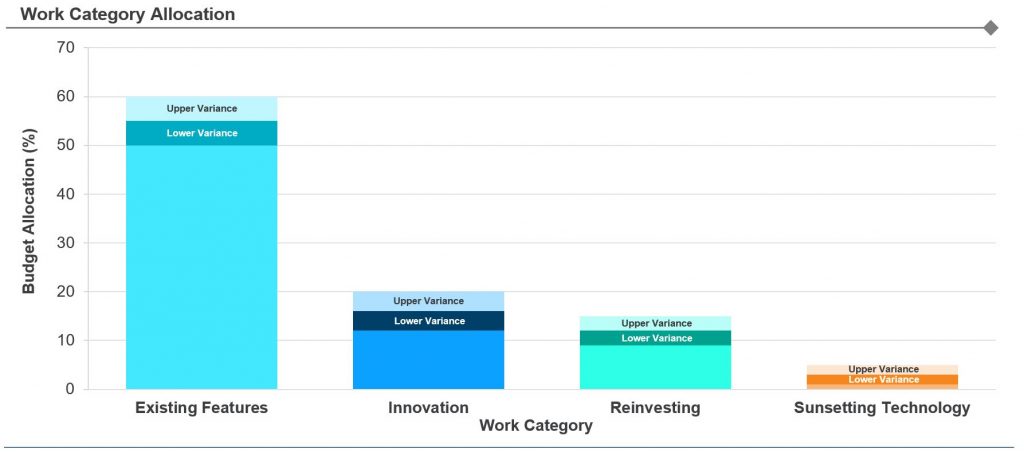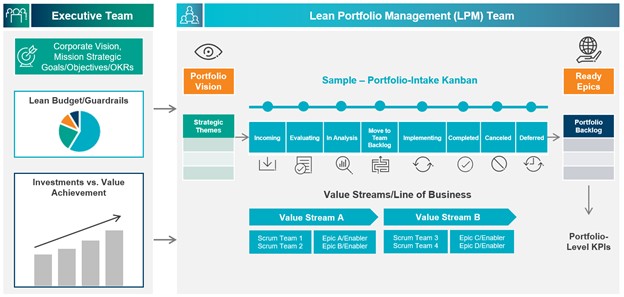As business and IT leaders adopt new operating models and organize around rapidly shifting customer and business prioritization, they are embracing value stream management as their preferred approach. The rate of change is forcing organizations to rethink how to expedite value as they seek to transform and stay relevant. In the previous two blogs, “Seven Key Factors to a Successful PMO Transformation” and “Program Management as a Service – Transforming the PMO Through a Scalable Service Model,” these issues were explored in detail. In this article, we discuss how organizations can achieve the benefits of value streams by implementing six key practices.
Foundational Elements
Value stream management is a practice increasingly adopted by organizations to identify, prioritize, fund and execute initiatives that add value for customers while breaking down the barriers and inefficiencies of traditional program management approaches. It enables organizations to understand and prioritize customer needs and to identify a comprehensive series of steps required to provide products or services (value) to internal and external customers. Organizations moving toward value streaming must adopt a customer-centric, agile and continuous-improvement mindset.
Traditional practices organize around functional silos designed for their own localized optimization, rather than the end-to-end value being delivered across areas. Legacy portfolio practices for identifying initiatives, allocating budgets and executing delivery are often inefficient due to multiple handoffs and delays, and a lack of systemic visibility. A value stream management approach, on the other hand, provides organizations improved visibility into end-to-end complex processes, and optimizes the flow of value.
In summary, transformation offices are experiencing several key benefits from value streaming, including:
- Alignment of people around common goals
- Creation of a concrete vision for true value
- Reduced churn and handoffs to optimize effort
- Visibility across the entire value chain
- Enablement of teams to quickly pivot and accelerate value delivery
- Organized resources around long-lived projects, with stable and focused teams that are effective at delivering value
- Elimination of short-term projects over time.
How Do I Get Started?
The transformation office should consider these three recommended actions before moving to a value stream management approach:
- Understand what value stream is – The concept is imperative to adopting lean business practices. As mentioned earlier, a value stream is how work flows through the system to fulfill a customer need and deliver value. This includes business, technology and other areas.
- Identify the organization’s value stream – An organization’s value stream can be identified by mapping products, projects and initiatives to the end-to-end streams or flows by which value will be delivered. A lean business technique, value-stream mapping allows the organization to visualize the end-to-end steps and systems that comprise the value stream. The technique also helps to illuminate the people organized into cross-functional teams to focus on value delivery.
- Seek continuous improvement – Value stream management needs to be aligned with specific and measurable targets to support actionable solutions. While value mapping, organizations should seek to eliminate waste from processes and flows. Avoid separating the components, as doing so will diminish the impact of the technique and make it more difficult to prioritize optimization efforts.
Six Key Practices to Accelerate Value Delivery
To attain greater benefits, organizations are transitioning to lean portfolio management (LPM), an agile and systems-based method used to consider how best to align strategy and investment funding with business-value priorities. LPM enables companies to deliver products and services faster to their customers and ensures that the organization is working toward delivering the most valuable work first and aligning the work to support the corporate strategic objectives. The company’s strategic goals and objectives guide the LPM team to define the portfolio vision, strategic themes and value streams that connect the portfolio work to the strategy of the organization. There are six leading practices when managing values streams:
- Value Stream Budgets – The executive team identifies funding for each value stream. Lean budgeting and allocating work by value streams provide the scrum teams the independence, flexibility and speed to deliver quality products to the customer. Lean budgets and value streams allow teams to pivot as client requirements change. Dedicated scrum teams assigned to value streams are more productive, predictable and responsive, and tend to deliver higher-quality work.
- Budget Guardrails – Establishing guardrails at the executive and portfolio levels helps the organization monitor and govern the value stream budgets and methods of spending. It ensures that there is a balance across portfolio work categories. Budget guardrails also allows the organization to identify when a portfolio-level approval review for bigger portfolio work items is required before the items are assigned to teams. The following is a commonly used value stream method for allocating funding by work category (see graph below):
- Existing or new features enhancements (60%)
- Innovation/research (20%)
- Reinvesting on beneficial innovation technology (15%)
- Sunsetting technology (5%)

- Portfolio Intake Process and Prioritization – The portfolio management team reviews all requests using a Kanban board process, which determines what should happen with the portfolio intake request. The team decides the priority of the request and whether it requires more analysis and approval at the portfolio level, should be canceled or deferred, or can be sent directly to the scrum teams to manage.
- Value Stream Initiatives – Initiatives in the portfolio backlog are executed through value streams that build the product or service that delivers customer value. Value stream initiatives are assigned to scrum or business teams to execute. The portfolio team ensures initiatives have the proper details and meet the “definition of ready,” so scrum teams have the information they need to properly conduct their sprint-planning session.
- Participatory Budgeting – The value stream budget owners meet semiannually to revisit budget allocations and ensure the proper amount of funding exists to address new initiatives and/or critical customer needs that arise unexpectedly.
- Portfolio Metrics and Governance – The executive team tracks investment returns versus spend to see if any adjustments are needed. As illustrated below, the LPM tracks portfolio-level metrics (i.e., initiatives, features) to see if the work that teams are delivering addresses the customers’ needs and provides positive outcomes. Dependencies that cannot be addressed at the team level are escalated to the portfolio level.

Value Streaming in Action
Many organizations that are looking to increase their efficiency, customer value and competitiveness realize that the old ways of working are no longer effective, and are making changes to increase collaboration with the business and technology teams to deliver value to customers and the organization.
In a recent example, a financial institution realized significant benefits after it implemented an LPM and value streams. The company underwent a portfolio management office (PMO) transformation to address issues with prioritizing work items assigned to teams, lack of communication and misalignment of vision between the business and technology teams. It also sought to boost innovation for future organizational growth. As a result of shifting from a waterfall approach to a lean PMO, refocusing funding and organizing work and scrum teams around value streams, the company was able to overcome these challenges. Additionally, collaboration and coordination improved between the technology and business teams.
Innovative organizations, like the one mentioned above, are quickly realizing that lean agile practices such as LPM and value stream management can unlock untapped efficiencies. These methods are a significant departure from the project-based execution methods historically used by PMOs. In the next article in this series, we will discuss what is needed to jump-start or recharge an agile transformation.
Learn about Protiviti’s Digital Transformation services.






